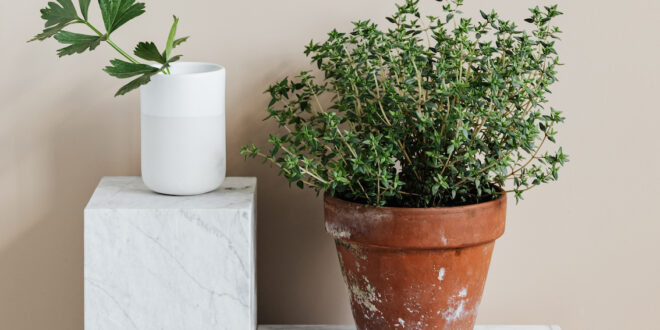“Parsley, sage, rosemary, and thyme,”– who can forget those words from the haunting lyrics of Simon and Garfunkel’s ‘Scarborough Fair.’ And who can forget the aroma of those actual herbs as they liven up our Christmas Day stuffing. While most of us reach for the dried variety of these tasty leaves to use in our festive cooking, having access to the fresh alternative makes a mouth-watering difference. When you can grow stuffing herbs so easily, why wouldn’t you want to have them in your own garden!
With the exception of parsley (more about that later) our three favourite stuffing herbs of sage, rosemary (the upright variety is best in the kitchen), and thyme all enjoy the same spot in the garden, and they are so unfussy, once established, they require next to no attention.
Sun is their number one requirement – so choose a spot that receives at least 6 hours of direct sunlight a day (no hiding in the dappled light for these heat-lovers). The soil you plant these herbs into needs to be free draining (a gardening term meaning soil doesn’t get waterlogged or hold onto moisture for days at a time after rain). A garden on a slope will usually provide free drainage, or you may have a spot on a sunny bank (the sort of place where ice-plant would be happy to grow). If you can’t find a naturally well drained place for your stuffing herbs, grow them in a container, or on a mound or in a built up bed, and add some fine river sand or grit to the soil.
Apart from a light scattering of slow release fertiliser pellets, your stuffing herbs won’t thank you for regular feeding, however, they do respond well to a late spring or early summer trim, once their flowering has finished. This will stop them getting ‘woody’ in their centre, and encourage the growth of the tender new leaves that are so tasty in cooking. In general, once plants are 2 years old, cut rosemary and sage stems back by a third, and trim
1-2cm off thyme bushes (dry the foliage from the trimmings, then crumble it and keep it in sealed containers for use in the kitchen).
As for parsley, our fourth stuffing herb, it couldn’t be more different to its aromatic cousins in its requirements. A softer-growth herb, it enjoys damp (but not wet) soil, and doesn’t ever like to dry out completely. (An old gardening adage, is if you have a dripping garden tap, you will surely find parsley growing beneath it!). While parsley will grow happily in full sun, it takes on a deeper green colour, and develops a more lush habit, if it receives a little dappled light during the hottest part of the day.
Parsley has a long tap root which doesn’t like to be disturbed – so it isn’t a plant that enjoys moving home. That’s why it’s best sown from seed (and often happily seeds itself if allowed to flower). If you prefer to buy it as a plant, be sure to select one that is grown in an individual container so you can gently lift it, soil and all, into its new position.
Although our four top stuffing herbs are traditionally pressed into service over Christmas, they can also be used in exciting ways at other times of the year. Sizzle fresh chopped sage and chopped garlic in butter as a sensational pasta sauce, add fresh thyme leaves to creamy stuffed eggs and vinaigrettes, lay tray-baked roast vegetables on a bed of fresh rosemary, and use parsley as the main ingredient in Lebanese tabbouleh salad.
With parsley, sage, rosemary, and thyme in your kitchen garden, you’ll take you’re cooking, and your Christmas dinner, to new heights!











Join the Discussion
Type out your comment here:
You must be logged in to post a comment.